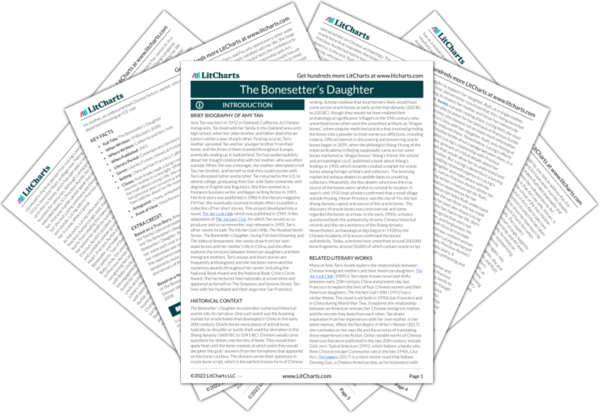At long last, LuLing reads her mother’s story. Unfortunately, like LuLing before her, Ruth reads the story too late to repair her relationship with her mother. Although LuLing is still alive, her illness means she and Ruth won’t really be able to make amends, just as LuLing couldn’t make amends with Precious Auntie by burying her bones. Still, reading the story is a profoundly meaningful experience for Ruth. It enables her to make peace in her own heart and begin letting go of her unresolved resentfulness toward LuLing for the way she treated Ruth in childhood. She also relates to her mother in a way she never has before. When Ruth remarks how LuLing’s desire to bury Precious Auntie’s bones was LuLing’s way of saying, “I’m sorry and I forgive you, too,” she repurposes the apology that she wrote in her journal as a teenager—something she couldn’t bring herself to convey to LuLing in person. She sees herself, her mother, and Precious Auntie as flawed women who share as much trauma and hurt as they do tradition and pride. All though each woman has inflicted harm on another, they are still worthy of forgiveness and closure, and no wrongdoing is wretched enough to sever the familial ties that bind them to each other.
